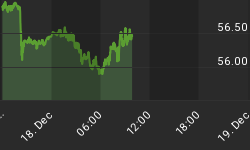For thirty years, Chile has been the most fiscally prudent nation in Latin America. This is best exemplified by its credit ratings, which at Baa1 (positive outlook) with Moody's and A with Standard & Poor's is the highest in the region. Through the 1990s until the present, Chile's interest rate spreads have tightened substantially.
From an investor's perspective, Chile is a textbook example of employing orthodox free market policies in the development process. Chile's Central bank is legitimately independent. Its elections, on both the national and local levels, are contested by various parties with viable chances of victory. Inflation is low (3.0%), consensus growth forecasts for 2005 are in the 5.5-6.2% GDP range (it was 5.9% in 2004), and international reserves were US $16 billion as of year-end 2004. Further, government fiscal policy-making is among the most prudent in the world.
Chile is rapidly developing and various quality of life indicators in the country have improved dramatically in the past few years. Investment is expected to grow by about 13% in 2005 and GDP per capita is US $5000.00 in 2005, which is second only to Mexico. A sizeable middle class has emerged with all the attendant demands on the political and economic system that one would expect. Chile's corporate sector has been the major contributor to Chile's strong growth. In fact, corporate revenue growth in 2005 is expected to grow by about 40%. The most important reasons for this are strong commodity prices, particularly for copper, pulp, paper and wood products. For example, the national copper company's (CODELCO) 2004 EBITDA is likely to be 150% higher than in 2003. CODELCO is the largest copper-producing company in the world. As of March 2005, copper prices continue to hit record levels on world markets and comprise 45% of Chile's total exports and 16% of GDP. Chile also exports salmon, fish meal, fruit and wine overseas.
Chile's economy is exceptionally dependent on foreign trade. In 2004, exports accounted for about 36% of GDP in total. The trade balance for 2004 showed a US $9.0 billion surplus, which was considerably higher than 2002. Total exports in 2004 were $32 billion, a 52% increase from $21 billion in 2002.
Perhaps the greatest risk faced by Chile's growing economy is posed by shortages of gas from Argentina. Natural gas consumption in Chile has grown at an annual rate of 12.3% since 1993, and accounts for 30% of Chile's energy consumption. Most of the gas comes from Argentina. Sharp (20-40%) cutbacks in gas exports during 2004 shocked the nation, and forced the public and private sectors to seek alternative sources of energy. But with the benefit of hindsight, it is also clear that the gas shortages were not as damaging as first feared. Consensus estimates are that they might have reduced GDP growth by only 0.2% in 2004. Hydropower accounts for about 70% of domestic energy production.
Chilean President Lagos enjoys a 61% approval rating as of February 2005, but he is in the sixth and final year of his tenure and elections will be held in December 2005. As of March 2005, Lagos Concertation party coalition is favored to be re-elected under new leadership. The conservative opposition will mount a viable challenge however. No matter who wins, there is broad agreement that prudent fiscal and monetary policies will prevail.















